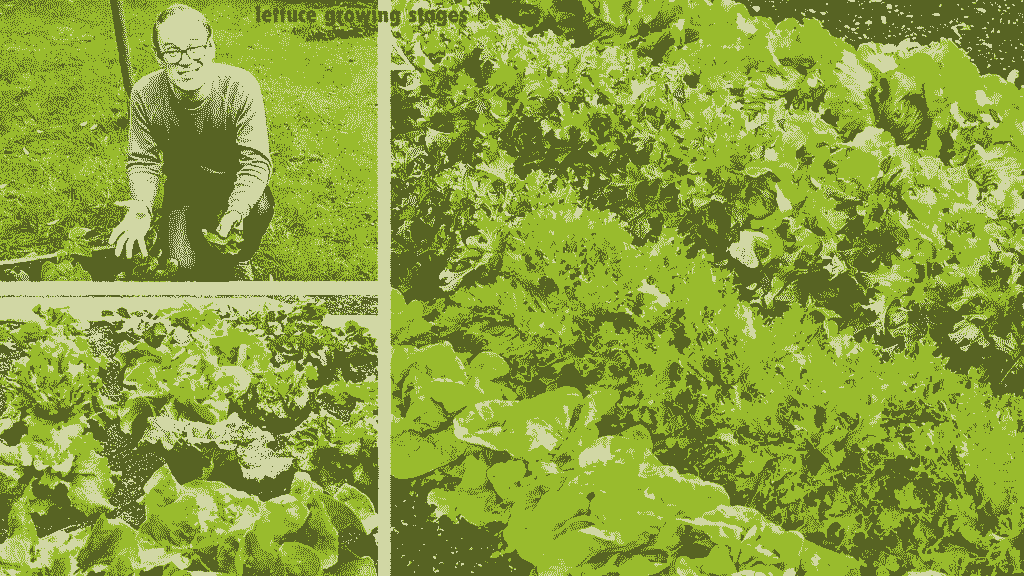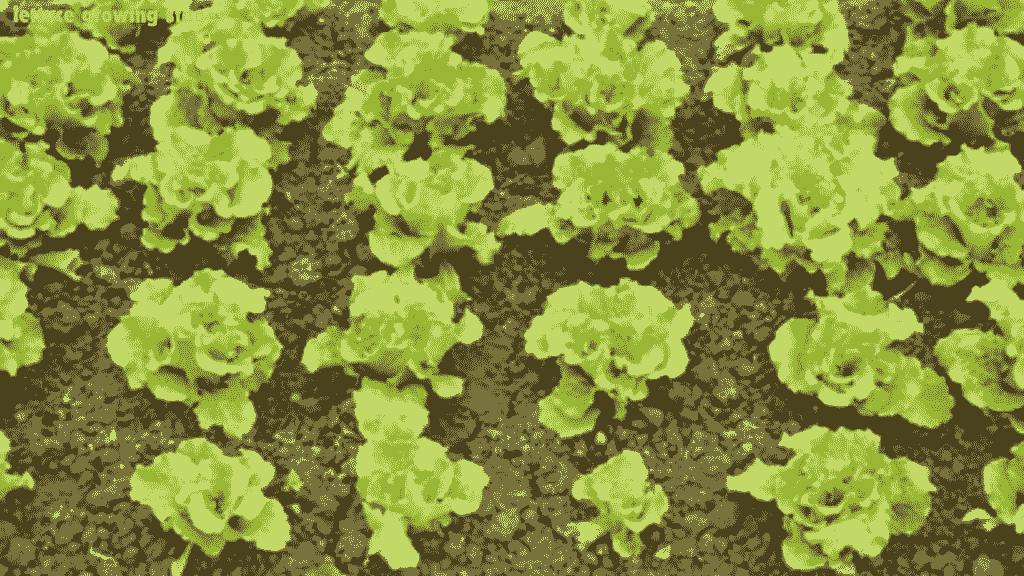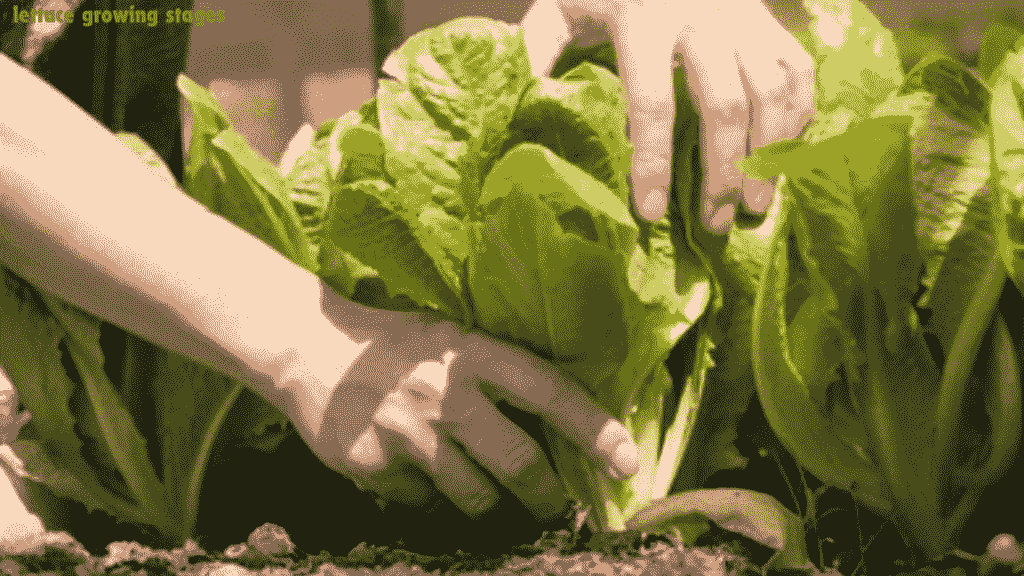Mastering Lettuce Growing Stages- Expert Tips For a Bountiful Harvest
lettuce growing stages is a well known, simple to-develop vegetable that can grow in various environments. Understanding lettuce developing stages is basic for both amateur nursery workers and professional herders.
lettuce growing stages, being a cool-weather conditions crop, requires exact circumstances at each phase of development. By finding out about these stages, you can upgrade your lettuce developing works on, ensuring solid plants and a gushing reap.
Whether you are developing leaf, romaine, butterhead, or chunk of ice lettuce, this guide will give you all the basic data to actually build lettuce from seed to collect.
Significance Of Understanding Lettuce Growing Stages
Comprehending the different lettuce growing stages developing stages is vital for increasing your yield and keeping up with sound plants. Each phase of development has clear requirements regarding water, accessories, and care.
By knowing these necessities, you can give the ideal events to your lettuce to grow. This information helps in forestalling normal issues, for example, shooting, bug pervasions, and supplement lacks.

Moreover, it licenses you to time your planting and gathering exactly, ensuring that you get the best quality lettuce. Generally, a profound awareness of lettuce developing stages can have the effect between a fruitful reap and a frustrating one.
Choosing The Right Lettuce Growing Stages Variety
Choosing the right lettuce growing stages mixture is the most important move toward an practical reap. Lettuce comes in different kinds, each with special qualities and development conditions. Here are the principal sorts of lettuce:
Leaf Lettuce: This type includes varieties like Green Leaf and Red Leaf. It’s known for its free leaves and fast development. Leaf lettuce is ideally served for the people who need a quick reap.
Romaine Lettuce: Romaine has a particular, extended shape and crunchy surface. It takes a piece longer to develop yet is profoundly nutritious and a pin in Caesar plates of mixed greens.
Butterhead Lettuce: Assortments like Boston and Bibb fall under this class. Butterhead lettuce growing stages is known for its peaceful, rich leaves and sweet flavor. It’s superb for servings of mixed greens and sandwiches.
Ice sheet Lettuce: Icy mass is the most significant assortment, portrayed by its fresh surface and closed head. It takes more time to develop however offers a vital crunch.
Putting up the Dirt For Lettuce Growing Stages Planting
Proper soil readiness is essential for solid lettuce growing stages development. lettuce growing stages in free, very much finished soil wealthy in natural matter. Here are a moves toward guaranteeing your dirt is prepared for planting:
Soil Testing and Modifications: Prior to planting, lead a dirt test to determine the pH and complement levels. lettuce growing stages favours marginally acidic to neutral soil with a pH somewhere in the range of 6.0 and 7.0.
In view of the experimental outcomes, correct your dirt likewise. Add lime to raise the pH or sulfur to bring down it. Reduce natural matter, like fertilizer or all around bad compost, to further develop soil ripeness and structure.

Ideal Soil Conditions for Lettuce: lettuce growing stages requires soil that holds dampness yet depletes well to forestall waterlogging. A blend of sandy topsoil and natural matter works best.
Guarantee the dirt is free enough for roots to infiltrate effectively. Carrying your dirt is weighty mud; consider adding sand or perlite to further develop waste.
Starting Lettuce Growing Stages From Seeds
Starting lettuce growing stages from seeds is a direct exchange that considers a more expansive choice of varieties. This is the way to begin:
Germination Relations: lettuce growing stages seeds are little and need light to develop. Scatter the seeds on the dirt surface and softly press them into the dirt.
Try not to cover them with an extreme amount of soil. Keep the dirt reliably wet however not waterlogged. Use a shower jug to fog the dirt surface tenderly.
Ideal Circumstances for Seed Germination: lettuce growing stages seeds sprout best at temperatures between 55-75°F (13-24°C). If you start seeds indoors, place them in a grand, warm area.
A bright windowsill or under-developed light works admirably. Seeds ought to grow within 7-10 days. When seedlings show up, ensure they get a lot of light to keep them from becoming leggy.
Migrating Lettuce Growing Stages Seedlings
When your lettuce growing stages seedlings have developed further and become solid, now is the ideal time to move them to their stable home in the nursery. Migrating accurately ensures your plants will continue to flourish.
When to Migrate: Lettuce seedlings are prepared to emigrate when they have something like two genuine leaves and are around 2-3 inches tall.
This normally happens around 3 a month after germination. Pick an overcast day or relocate in the late evening to decrease relocate shock.
The most effective method to Relocate Properly: Solidify off your seedlings by progressively showing them to outside conditions more than seven days. Begin with a couple of long periods of outside openness every day, extending the time steadily.
At the point when you’re prepared to migrate, dig an opening in the pre-arranged soil somewhat bigger than the seedling’s root ball. Delicately destroy the seedling from its case, being mindful so as not to harm the roots.
Place the seedling in the opening, cover with soil, and water completely. Space your plants as per the variety’s necessities, generally 6-12 inches divided.
Vegetative Stage Of Lettuce Growing Stages Growth
During the vegetative stage, lettuce plants focus on developing their leaves. This is a vital phase where proper care can greatly impact the quality and yield of your harvest.
Leaf Development: lettuce growing stages plants grow rapidly during the vegetative stage, producing new leaves frequently. Ensure your plants receive plenty of sunlight, ideally 6-8 hours a day.
If you’re growing lettuce growing stages in a hot conditions, provide some afternoon shade to prevent the plants from getting too warm.
Nutrient Needs During Vegetative Stage: During this stage, lettuce growing stages requires a steady supply of nutrients to support leaf growth. Use a balanced fertilizer or organic options like compost tea.
Be watchful about any signs of nutrient depletion, such as yellowing leaves or small growth. Regularly feeding your plants confirms they have all the essential nutrients to produce lush, healthy vegetation.
Diminishing Lettuce Growing Stages Plants
Diminishing is a fundamental stage in lettuce growing stages development that guarantees your plants have adequate room to develop and flourish. Packed plants can prompt contest for assets and increment the gamble of infections.
Why Reducing is Vital: At the point when lettuce seeds are planted, they frequently develop intently together. Decreasing assists with patting out congestion, allowing each plant to get good light, water, and supplements.
This cycle further develops air dissemination around the plants, lessening the likelihood of infectious sicknesses and bug pervasions.
Education to Thin Lettuce Plants: Slender your lettuce plants when they are around 2-3 inches tall. Cautiously stop the more helpless seedlings, leaving the most grounded ones separated by the variety’s conditions, normally 6-12 inches divided.

Use scissors to clip the avoided seedlings at the dirt level to refrain from upsetting the floors of the extra plants.
Watering And Water System
Honest watering is important for solid lettuce plants, as they require constant moisture without waterlogging.
Understanding the watering needs at various phases of development can forestall issues like withering or leaf tip consumption.
Water Conditions for Various Stages: Lettuce needs standard watering to keep the dirt uniformly wet. During the beginning phases of development, when seedlings are laying out roots, water delicately and regularly to keep the dirt surface damp.
As the plants mature, increase the amount of water, ensuring the dirt staying parts are reliably sodden yet not absorbent.
Best Practices For Water System
Be proactive and reliable by watering your lettuce plants in the morning. This method allows the foliage to dry during the day, reducing the risk of diseases like mold. It’s a simple yet practical way to care for your plants.
Supplement The leaders: Legitimate supplement the executives is fundamental for developing solid and useful lettuce plants. Giving the right equilibrium of accessories ensures strong development and a great reap.
Treatment Systems: Lettuce benefits from a proper compost that provides fundamental nutrients like nitrogen, phosphorus, and potassium. Pick a waste formed for vegetables or use natural options like fertilizer tea.
Apply manure every 2-3 weeks during the growing season, adhering to pile guidelines for rates and application methods.
Signs of Supplement Lack: Screen your lettuce plants for signals of complement lack, for example, yellowing leaves, hindered development, or painful leaf tone.
These side effects can show an absence of clear supplements, like nitrogen or iron. Change your practice routine likewise to address inadequacies and advance solid product.
Bug And Spreading Deterence
Overseeing bugs and conditions is essential for keeping up with solid lettuce plants all through the developing season. Counteraction and early appeal are vital to limiting harm and ensuring a fruitful reap.
Normal Bugs and Sicknesses: Lettuce can be vulnerable to different vermin, including aphids, slugs, and caterpillars. These problems can harm leaves and diminish plant energy.
Conditions like fleece buildup and fine mould can likewise influence lettuce, causing leaf yellowing and spots.
Natural and Artificial Control Systems: For bug control, consider using natural methods, for example, neem oil, insecticidal cleanser, or presenting valuable bugs like ladybugs.
These techniques really control bugs without hurting valuable animals or the environment. In the case of using synthetic controls, select items named for lettuce and stick to application guidelines cautiously to limit the ecological effect.
By carrying out blended bug-the-board practices and maintaining perfect nursery cleanliness, you can successfully control disturbances and infections, ensuring solid lettuce plants and a useful harvest.
Reaping Lettuce Growing Stages
Knowing when and how to reap lettuce promises you get the best flavor and surface from your harvest. Here are the key considerations:
When to Reap: Reap lettuce when it arrives at a size suitable for the variety you planted. Leaf lettuce can be reaped ceaselessly by picking external leaves on a case by case basis. Head lettuce ought to be gathered when the heads feel firm and smaller.
Methods for Community: Utilize a sharp blade or scissors to cut lettuce leaves or heads simply over the dirt level. Gather toward the start of the day when leaves are fresh and loaded with water. Abstain from picking lettuce during the intensity of the day, as leaves can fade rapidly.
By reaping lettuce with flawless timing and utilizing proper strategies, you can enjoy new and tasty plates of mixed greens directly from your nursery.
Post-Collect Taking Care Of
Honest post-gather trading with contracts that your lettuce growing stages remains new and tasty for longer, enlarging its time span of usability.
Putting away Lettuce: After gathering, store lettuce in a cool, damp weather to keep up with newness. Wrap lettuce heads in sodden paper towels and spot them in a deflated plastic sack in the fridge.
On the other hand, store free leaves in a fixed container fixed with paper towels to retain excess dampness.
Enlarging Timeframe of Realistic Usability: To broaden the timeframe of realistic usability of gathered lettuce, handle it tenderly to abstain from swelling.
Try not to wash lettuce until you’re prepared to utilize it, as dampness speeds up waste. Check put away lettuce consistently for any indications of shrinking or rot, and dispose of any harmed leaves speedily.
Conclusion
Growing lettuce can be a rewarding venture, whether you’re a novice gardener or an skilled farmer. By comprehending the lettuce growing stages—from seed to harvest—and executing proper care practices, you can grow healthy plants and want a plentiful harvest of fresh, nutritious lettuce.
Remember to choose the right lettuce variety for your environment, prepare the soil good, and provide constant care throughout the growing season. Watch for pests and diseases, manage nutrient levels, and harvest at the right time to maximize flavor and quality.
FAQS
How long does a lettuce take to grow?
Lettuces grow fastest in warm weather, with loose-leaf varieties ready to pick in as little as four to six weeks. Hearting lettuces take longer, around 10 to 14 weeks, relying on the type and time of year. Reap in the morning, if feasible, when the leaves are fresh and pulpy.
How often should I water lettuce?
Lettuce has shallow roots, so plants need constant watering. Check at least twice a week and water if the soil is dry down to 1 inch deep. Containers of lettuce need to be saturated more often than garden beds, particularly in the summer.
Is lettuce easy to grow?
Lettuce is an easy-to-grow annual vegetable. Considered a spring and fall crop, lettuce thrives when temperatures are between 60 to 70 degrees F. Many varieties reach maturity in as little as 30 days, and some can even be harvested much earlier as microgreens.
Can I grow lettuce all summer?
Growing lettuce in the summer is a challenge almost anywhere. The heat suppresses growth and kills germination rates. The sun scorches leaves and rapidly wilts the fresh harvest. Summer is just not lettuce’s season.
How do you promote lettuce growth?
A moist, fertile soil in a bright spot is the happiest home for lettuce plants. Give them a rich mix by adding compost or feed directly with a nitrogen-rich organic fertilizer like blood or alfalfa meal scattered around their roots.
Also Read

One Comment